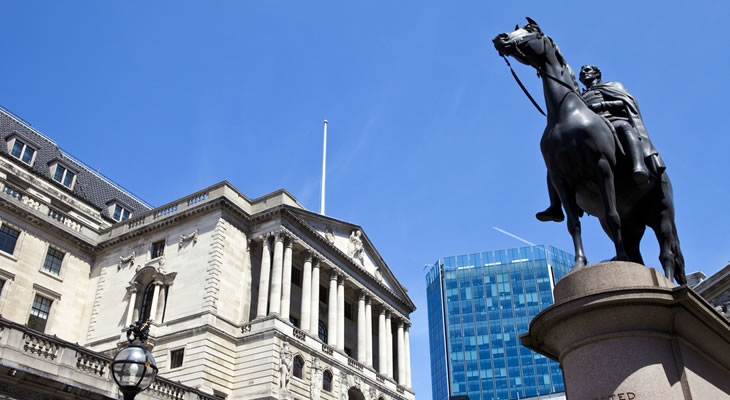BoE Dovishness Drags Pound Sterling US Dollar (GBP/USD) Exchange Rate Lower
As the Bank of England (BoE) opted to leave interest rates on hold for another month the Pound Sterling to US Dollar (GBP/USD) exchange rate remained on its extended downtrend.
While there was no real expectation for a change in monetary policy at this stage the split nature of the decision still put Pound Sterling (GBP) under pressure.
With two policymakers continuing to push for lower interest rates the risk of a 2020 rate cut lingers, to the detriment of GBP exchange rates.
As a sense of political anxiety and Brexit-based uncertainty looks set to hang over the UK economy for some months yet to come the BoE could see reason to loosen monetary policy.
November’s disappointing month of UK retail sales also put a dampener on the Pound, with the -0.6% decline in sales suggesting that consumers are taking a more cautious outlook in the fourth quarter.
Sharp US Manufacturing Index Drop Weighs Down US Dollar
A sharp decline in December’s Philadelphia Fed manufacturing index put pressure on the US Dollar (USD), meanwhile.
As the headline index dropped from 10.4 to just 0.3 this suggests that the US manufacturing sector saw a fresh slowdown in the final month of the year.
Even with the prospect of a sustained easing in US-China trade tensions on the horizon investors were discouraged by this latest sign of weakness from the world’s largest economy.
With initial jobless claims also showing a spike higher on the week there appeared little incentive to favour the US Dollar on Thursday.
However, this underwhelming run of US data was still not enough to give the GBP/USD exchange rate any particular degree of support.
With forecasts pointing towards a modest acceleration in November’s personal spending index the appeal of the US Dollar could pick back up ahead of the weekend.
Negative UK Consumer Confidence Reading Forecast to Maintain Negative Pound Bias
Friday’s GfK consumer confidence index could extend the GBP/USD exchange rate’s bearish run further as markets anticipate another negative reading.
If the index remains steady at an underwhelming -14 this may fuel fresh anxiety over the health of the economic outlook heading into 2020.
As stronger levels of consumer confidence and spending have helped to shore up economic activity in previous quarters another negative reading could weigh heavily on the Pound.
On the other hand, any indication that sentiment started to recover in the final month of the year may encourage investors to take a more positive view on GBP exchange rates.
Even if the data impresses, though, the Pound still looks vulnerable to fresh political developments.
Unless markets see less reason to fear a potential cliff-edge Brexit in 2020 the GBP/USD exchange rate looks set to remain biased towards the downside.


Comments are closed.